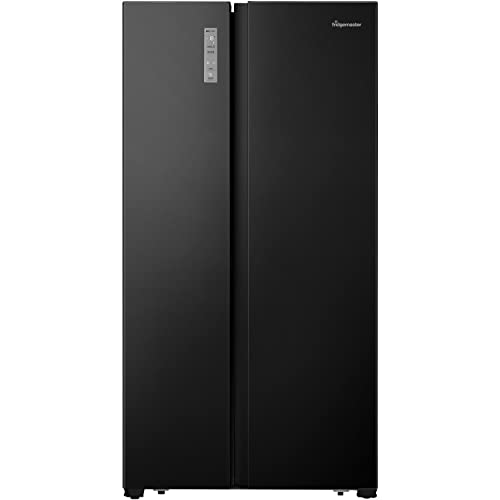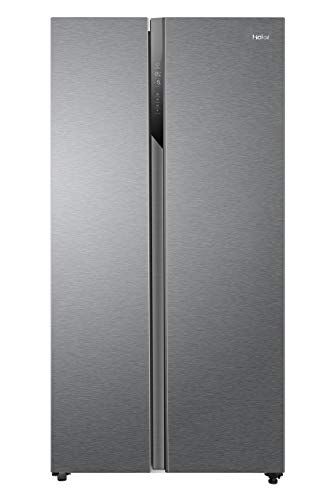Understanding Fridges and Freezers: The Essential Kitchen Appliances
cheap fridges uk and freezers are 2 of the most necessary appliances in modern cooking areas. These devices serve an important function in food conservation and waste reduction by guaranteeing that perishable items remain fresh and safe for usage. This post looks into the various kinds of fridges and freezers, their performances, and crucial considerations for selection and upkeep.
Kinds of Refrigerators
The marketplace provides a range of refrigerator types, each developed to fulfill different customer needs. Below is a list of the most typical kinds of fridges:
Top-Freezer Refrigerators
- Most typical type.
- Freezer compartment is located above the refrigerator area.
- Typically more budget-friendly and energy-efficient.
Bottom-Freezer Refrigerators
- Freezer lies at the bottom.
- Enables much easier access to fresh items at eye level.
- Frequently includes pull-out drawers for better company.
Side-by-Side Refrigerators
- Refrigerator and freezer areas are nearby.
- Perfect for narrow kitchen areas and permits easy access to both compartments.
- Frequently includes water and ice dispensers.
French Door Refrigerators
- Combines a bottom freezer with double doors at the top.
- Offers adequate storage and trendy styles.
- Frequently includes features like temperature-controlled drawers.
Compact Refrigerators
- Smaller sized size suitable for restricted areas.
- Frequently used in dormitory, studio apartments, or as secondary fridges.
Table 1: Comparison of Refrigerator Types
| Type | Benefits | Drawbacks | Normal Size |
|---|---|---|---|
| Top-Freezer | Budget friendly, energy-efficient | Less convenient access to the freezer | 14-30 cu. ft. |
| Bottom-Freezer | Much easier access to fresh food | Freezer can be more difficult to organize | 19-30 cu. ft. |
| Side-by-Side | Easy access, water/ice dispenser | Narrow vs. storage space | 22-30 cu. ft. |
| French Door | Trendy, large, organized | More pricey | 20-30+ cu. ft. |
| Compact | Space-saving, portable | Limited storage | 1.7-5.5 cu. ft. |
Types of Freezers
Freezers are an equally crucial device for food preservation. They are available in different designs developed to fit various household needs. Consider the following types:
Upright Freezers
- Run like a basic refrigerator with vertical storage.
- Much easier to arrange with racks and compartments.
Chest Freezers
- Big, horizontal style typically using more storage space.
- Maintains temperatures better throughout power failures.
- More energy-efficient than upright models.
Portable Freezers
- Compact systems perfect for outside activities or small spaces.
- Often utilized for camping trips or as temporary storage.
Table 2: Comparison of Freezer Types
| Type | Benefits | Disadvantages | Typical Size |
|---|---|---|---|
| Upright Freezer | Simpler to arrange | Less energy-efficient, more floor space | 5-20 cu. ft. |
| Chest Freezer | Holds more products, energy-efficient | Harder to organize | 5-25 cu. ft. |
| Portable Freezer | Compact and flexible | Restricted storage capacity | 1-10 cu. ft. |
Key Features to Consider
When selecting a fridge or freezer, customers should remember several functions that can boost functionality:
- Energy Efficiency: Look for designs with the ENERGY STAR certification to save money on electricity expenses.
- Storage Capacity: Evaluate storage needs based upon household size and consuming habits.
- Temperature Control: Some appliances offer digital controls for precise temperature settings.
- Adjustable Shelving: Customizable shelving enables optimum company.
- Water and Ice Dispenser: Offers convenience but can take up important space inside.
- Sound Level: Sound rankings can affect comfort, particularly in open-concept homes.
Advantages and disadvantages of Having a Fridge and Freezer
While fridges and freezers are essential technologies, they likewise have particular benefits and drawbacks:
| Pros | Cons |
|---|---|
| Protect food life expectancy and reduce waste | Need regular maintenance |
| Enable bulk purchasing and meal prepping | Can be pricey to purchase and run |
| Offer convenience and fast access to food | Inhabit substantial cooking area space |
Upkeep Tips
To make sure durability and optimum efficiency of fridges and freezers, consider the following maintenance suggestions:
- Regular Cleaning: Clean the interior and exterior periodically to prevent buildup of dirt and bacteria.
- Check Seals: Inspect door seals regularly for leaks to keep effectiveness.
- Temperature Settings: Keep the fridge at 34-38 ° F and the freezer at 0 ° F for optimum food conservation.
- Thaw as Needed: Chest freezers need to be thawed regularly to keep efficiency.
- Clear Air Vents: Ensure that air flow isn't blocked to improve energy performance.
FAQs About Fridges and Freezers
Q1: How long can food be saved in a freezer?A: Most foods can be kept in a freezer for numerous months. Meats and poultry frequently last 4-12 months, while veggies can last approximately 8-12 months.

Q2: How typically need to I clean my buy fridge freezers and freezer?A: It is advisable to clean your fridge and freezer every 3 to 6 months, or as required when spills happen. Q3: Can I put hot food directly in the fridge?A: It is recommended to cool hot food to space temperature before putting it in the best Fridge freezers uk to avoid
raising the temperature inside the appliance. Q4: Why is my fridge freezer on sale running constantly?A: This could be due to a malfunctioning thermostat, blocked coils, or door seals that aren't working properly. Fridges and freezers are indispensable
properties to modern homes, providing essential services for food storage and conservation.
Comprehending the various types, features, and maintenance requirements can assist consumers select the right appliances for their needs and optimize their performance. Embracing energy-efficient designs not just supports sustainable practices however likewise contributes to significant savings on energy bills, making informed choices more essential than ever.

